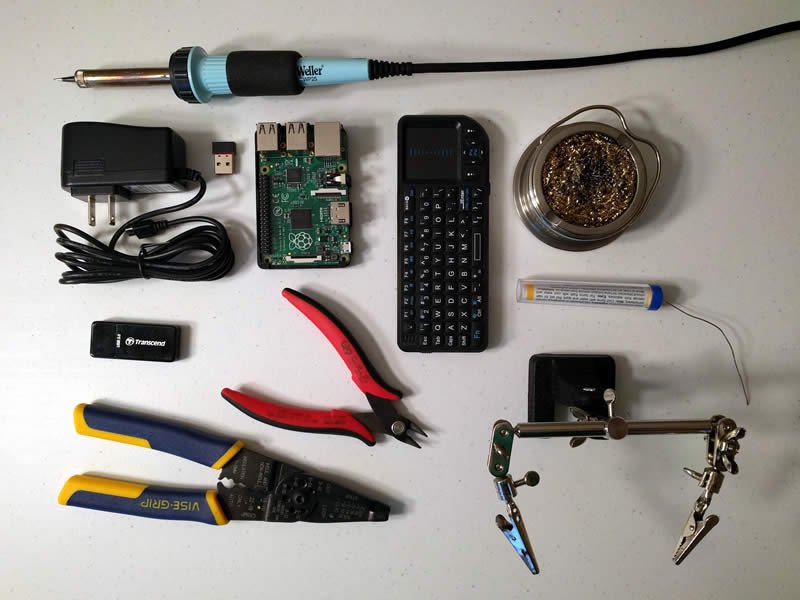I figured I would archive the whole thing with a time lapse video recorded on a homemade device. That was a bit too grand a vision for the time I had available, but the time lapse camera idea lived on, so I recently tackled that project.
This project uses one of the super cheap and diminutive Raspberry Pi Zeros, a 3-D printed case, and some electronic components to make a dedicated time lapse camera. Adafruit has complete (and I mean complete) build instructions for this camera.
Note: you can get many of these items (especially components) much cheaper from places other than adafruit, but adafruit offers some of the most detailed and straightforward learning materials and projects available, and I prefer to support their work by paying full price for everything from them.


You can 3D print the camera case with the model available from Thingiverse. I printed mine in PLA, and the fit was perfect. You can also print in ABS, but you'll need to increase the model size by 2% to allow for shrinkage. If you don't have access to a 3D printer, check out 3D Hubs, a network of hobbyists and print shops where you can send items for printing. There are several good hobbyists in Raleigh that offer great service and prices that put larger printers like Shapeways to shame. While they don't offer the same breadth of materials, you should be able to find someone nearby who can get you up and running quickly.
There's an easy way to configure the software, and a hard way. The easy way is inflexible, and allows you only about 2.5GB of space to store your time lapse photos, but all it requires is downloading a pre-configured image and loading it on your microSD card. At the default resolution (you can configure this), this likely gives you much more room than you need, with enough space to capture over a days' worth of photos snapped every 15 seconds. But I like flexibility, and I figure that an 8-megapixel camera is wasted at low resolution, so I wanted the option to capture high-resolution photos for extended periods of time. So I took the long approach, which consists of the below broad steps:
I did a terrible job of documenting each step with photographs, but the general procedure is:
Adding these components to the case proved much more difficult than I expected. After a large number of false starts, I ended up tacking the switches and LED sequin in place with mounting putty, and then securing each piece with craft glue from a detail glue gun (the thin sticks, not the larger, standard ones).
When a power supply is connected to the Pi, or when you turn the slide switch "on," the Pi Zero will wake and begin happily snapping photos according to your settings. You can adjust resolution, time intervals, and image quality by editing the timelapse script added to your Pi Zero during software setup. When you're done snapping photos, press and hold the tactile button until it turns off (it will light as you press it, then dim to indicate that it is shutting down). When the light goes out, turn the slide switch "off" and remove the SD card to review your images.
Ihave heard there are troubles of more than one kind. Some come from ahead, and some come from behind. But I've brought a big bat. I'm all ready, you see. Now my troubles are going to have troubles with me!
- Dr. Seuss

Hi, Shaun here. No, not the soccer player. And not the children's performer. Just me, a 40-something father of two, residing in Raleigh, NC, where the summer heat has me questioning my life choices.
I try lots of things. I'm okay at some of them. My hobby is collecting hobbies. I drink a lot of coffee. I'm susceptible to ear worms. I throw myself into the things I love. I can't wait for the weekend.